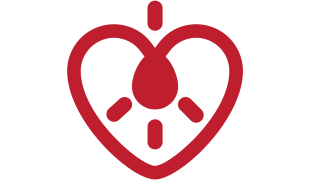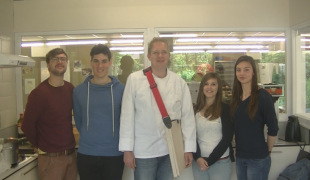- 6778
- 475
- 24
- 16
- 0
- Help Ukraine
About the solution
Cooking is challenging for the blind due to the lack of sensory references. To overcome the steep learning curve, Folks kitchenware leverages on natural, sensory feedback and tactile cues such that they can prepare food safely with confidence and dignity.
Introduced as a system, Folks taps onto the adjusted sensory strengths (like touch or hearing) of the blind. Knife Poor hand postures, irregular ingredients and dull knives result in cuts which dissuade the blind from cooking. To help them gain tool confidence, a retractable guard serves as a physical anchor and guides the fingers during the cutting process. This encourages blade contact (safer). It also allows the blind to clean off any food that is stuck on the blade with a simple trigger. After usage, the guard can also be removed for cleaning. Chopping Board The side tray, which pegs freely on the sides of the board, acts as an extension of the hand to gather and efficiently transfer ingredients with less spillage. Teaspoon Used in any cup/glass/mug, the spoon’s integrated buoy floats when liquid is added. It thus becomes a reference point that informs the blind of impending liquid contact. This lowers risks of scalds or burns.
https://youtu.be/MdE3wP_qeBc
This solution shall not include mention to the use of drugs, chemicals or biologicals (including food); invasive devices; offensive, commercial or inherently dangerous content. This solution was not medically validated. Proceed with caution! If you have any doubts, please consult with a health professional.
DISCLAIMER: This story was written by someone who is not the author of the solution, therefore please be advised that, although it was written with the utmost respect for the innovation and the innovator, there can be some incorrect statements. If you find any errors please contact the patient Innovation team via info@patient-innovation.com
-
-
558
-
0
-
8388

Student invents device to alert caregivers if the stove is on for too long
CAREGIVING
(SELF)-CARE: EATING: Eating independently.
Cooking
Dementia (Alcoholic Dementia, Vascular Dementia)
Assistive Daily Life Device (to help ADL)
Strategy/Tip
Anxiety
Difficulty concentrating or making decisions
Promoting self-management
Preventing (Vaccination, Protection, Falls, Research/Mapping)
Caregiving Support
Neurology
Psychiatry
Singapore
-
-
-
716
-
0
-
9931

Friends create cooking aid for visually impaired boy
-
-
-
339
-
1
-
5247

Avoid skin wounds
(SELF)-CARE: EATING: Eating independently.
(SELF)-CARE: DRINKING: Drinking independently.
CAREGIVING
Alzheimer's Disease
Gestational Diabetes
diabetes type 2
diabetes type 1
Strategy/Tip
Memory loss
Confusion
Anxiety
Mood swings
Sensory disturbances (e.g., hypersensitivity to touch, temperature changes)
Changes in skin texture
Enhancing health literacy
Promoting self-management
Managing diabetes
Preserving Organ Function
Managing Neurological Disorders
Restoring Skin Health
Preventing (Vaccination, Protection, Falls, Research/Mapping)
Raise awareness
Caregiving Support
Endocrinology
General and Family Medicine
Neurology
Portugal
-
 en
en